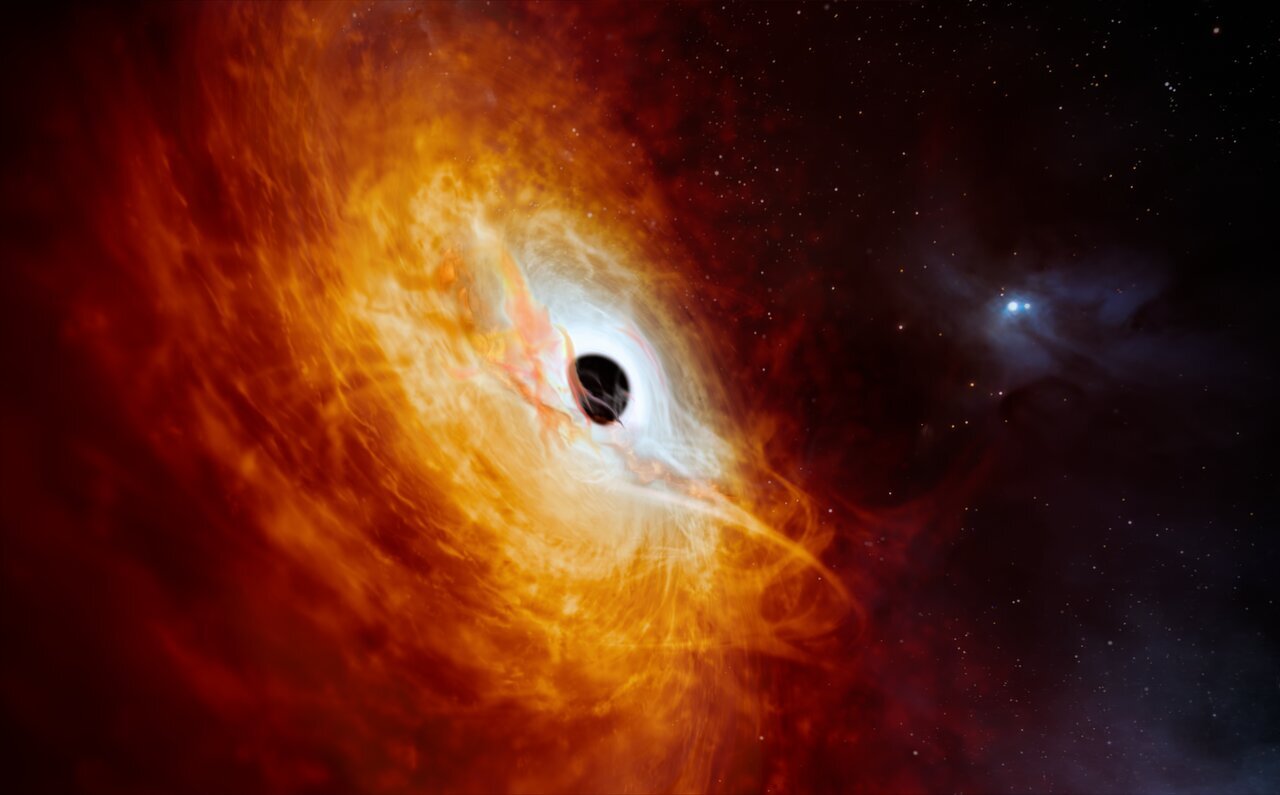Scientists working with the Very Large Telescope have discovered a record-breaking quasar. It is interesting not only because it is the brightest. Also, the supermassive black hole at its center increases its mass faster than all such known objects.

Record-breaking quasar
Astronomers have recently discovered a record-breaking quasar in several indicators. They were helped in this by the Very Large Telescope (VLT) of the European Southern Observatory, which is located in South America. An article about the discovery was published in the journal Nature Astronomy.
Quasars are the cores of galaxies that are so bright that we see them even when the star system is not visible at all. The source of such activity is a supermassive black hole that actively absorbs matter. At the same time, it grows and generates radiation.
The quasar, called J0529-4351, described in the new study, is so far away from us that radiation from it takes 12 billion years to reach Earth. At the same time, it is very clearly visible in the images, because it is 500 trillion times brighter than the Sun. More precisely, the accretion disk with a diameter of 7 light-years surrounding the black hole is so bright. It is about 15,000 times wider than the orbit of Neptune.
This disk makes J0529-435 the brightest of all known quasars. The black hole, despite the fact that it is 17 billion times brighter than the Sun, is not visible at all. But this does not mean that it does not impress with its parameters. Among all such objects, it grows the fastest. Every day it becomes heavier by one mass of the Sun.
Why wasn’t the quasar discovered earlier
The question arises: if J0529-4351 is so bright, then why hasn’t it been noticed before? However, it was noticed. It is already present as a radiation source in the Schmidt Southern Sky Survey. The survey was carried out in 1980. However, neither then nor later was it recognized as a quasar.
The reason for this is that the volumes of observational data are extremely large. The researchers simply could not process all this data manually. The situation has improved with the emergence of artificial intelligence. Neural networks are currently engaged in the classification of space objects. But they also failed to correctly classify J0529-4351 at the time.
The fact is that before using an artificial intelligence system, they train on already recognized images. But J0529-4351 is much brighter than the average quasar. Therefore, artificial intelligence systems have made the same mistake as humans: it doesn’t look like a quasar, so it’s a star.
Only last year, researchers from the Siding Spring Observatory in Australia established its true nature. But it was only possible to find out that this was a record-breaking quasar with the help of VLT. Now, scientists hope to observe it with the help of other tools to learn more about the very essence of supermassive black holes.
According to phys.org
Follow us on Twitter to get the most interesting space news in time
https://twitter.comne/ust_magazine


